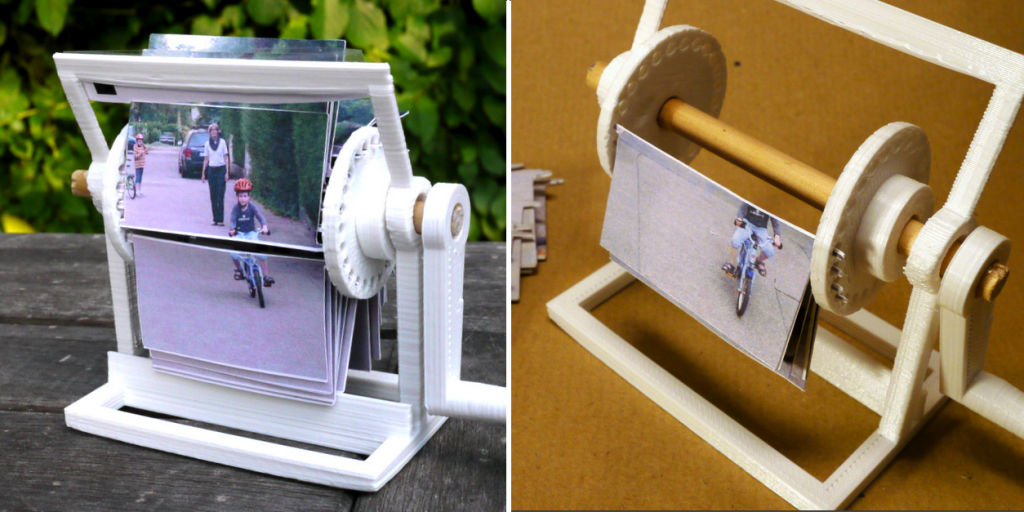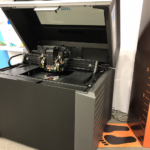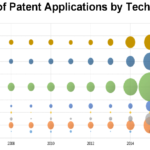

Back in 1861, a Philadelphia man by the name of Coleman Sellers II filed a patent for one of his many inventions. The patent was for a device that he called the kinematoscope, which was able to take chronologically ordered photos and turn them into movies. By “movies” I don’t refer to the big screen, high-definition, 48-frame-per-second films that we are used to seeing today, but the kinematoscope was a major step in the history leading up to today’s modern-day film production.
For one man, named Markus Fischer, the modern technology of 3D printing has allowed him to turn back the clock and recreate his very own kinematoscope.
“The design is very simple and straightforward,” Fischer tells 3DPrint.com. “I use Blender, and cobbled together the first prototype basically using boxes and cylinders. You can turn virtually any video you have into a series of image cards for the kinematoscope. The video snippet should be a couple of seconds in length, and you will need 24 still images from it. [The kinematoscope] is a very primitive, yet effective way of getting moving pictures. It was the ancestor of movie projectors. Turn the hand crank, and it animates the contained image cards into an animation, using persistence of vision, similar to how a flip book works.”

The fabrication of the device consists of just four 3D printed parts: the handle, the frame, and two wheels. These parts, in addition to a 7-8mm diameter wooden rod, can be assembled to make this intriguing machine. Once assembled, Fischer recommends breaking your favorite film down into individual still images. The video should only be a couple seconds long, and 24 still images should be printed onto image cards and then attached to the rotating axis of the kinematoscope.
“There are several programs out there which can convert a video into a series of JPGs,” says Fischer. “The one I used is ‘Free Video to JPG Converter’ by DVDVideoSoft. Be careful, though: The installer is evil and tries to install adware. Use manual options and carefully unselect all optional things it tries to install.”
The software allows you to specify how many frames should be taken, and even which frames are used. Fischer recommends creating videos with a frame rate of less than 24 images per second, as this allows for more action to take place. Complete instructions on setting up the device can be found on Fischer’s website.
The way the kinematoscope works is that when the handle is turned, the frames (individual photos) rotate, creating a flip book-like effect. It’s a great way to store special moments that you would like to replay over and over again, and it also makes for the perfect gift to that special someone. Fischer has made the design files for his device available on Thingiverse for anyone to download and print themselves.
What do you think about Fischer’s 3D printer kinematoscope? Will you be 3D printing your own? Discuss in Kinematoscope forum thread on 3DPB.com. Check out the video of the device in action below.
If you're looking to get architectural 3D animation in the USA, our service provides an exceptional way to bring your architectural concepts to life through dynamic, immersive visuals. Through our platform, you can easily request high-quality 3D animations that showcase your designs in motion, offering a detailed view of your project from multiple angles and perspectives. Whether it's for a real estate development, a commercial building, or an urban planning project, our expert team ensures that every detail is captured in a visually compelling animation.
Through our website, you can seamlessly get architectural 3D animation tailored to your project’s specific needs. With our help, you can offer potential clients or investors an engaging experience that goes beyond static images. By integrating CGI animations with real-world settings, lighting, and textures, our team creates a lifelike experience that allows your audience to interact with your project as though it were already built. This service is perfect for presenting complex designs in a clear, visually attractive way that stands out in the competitive architectural market.




